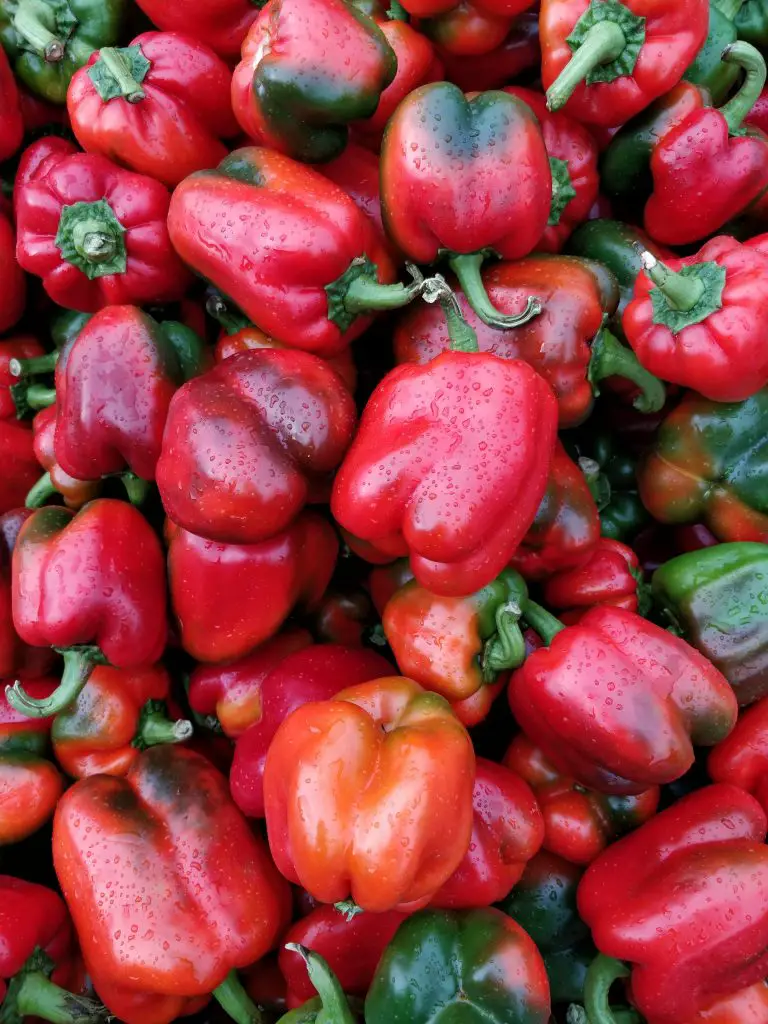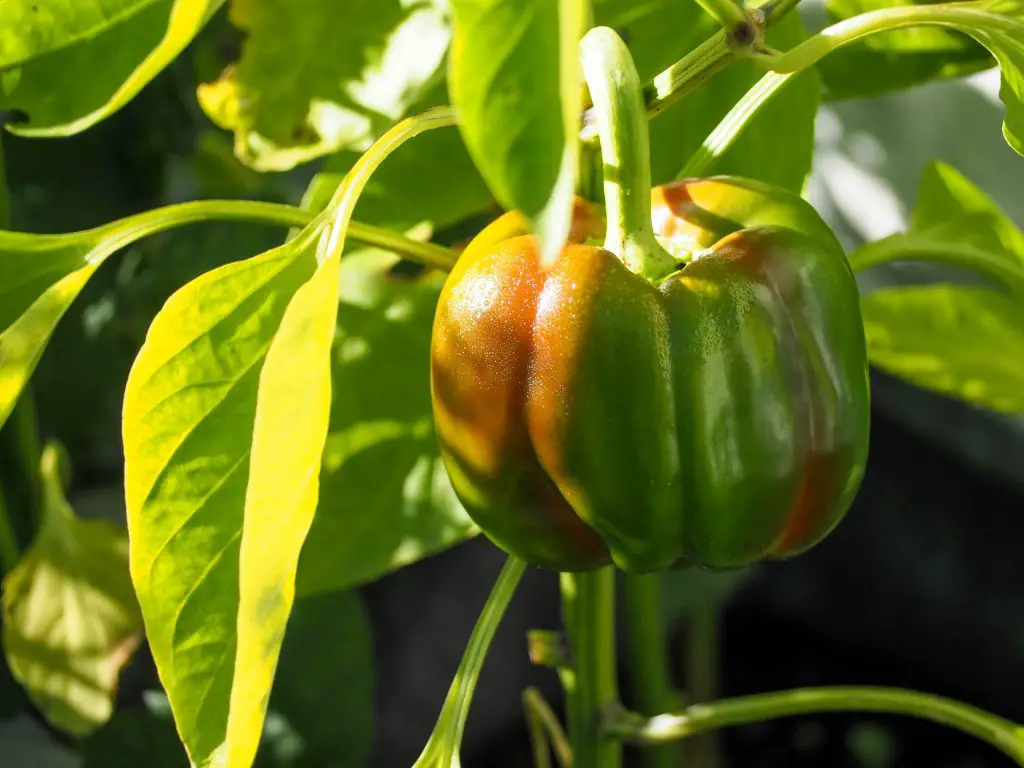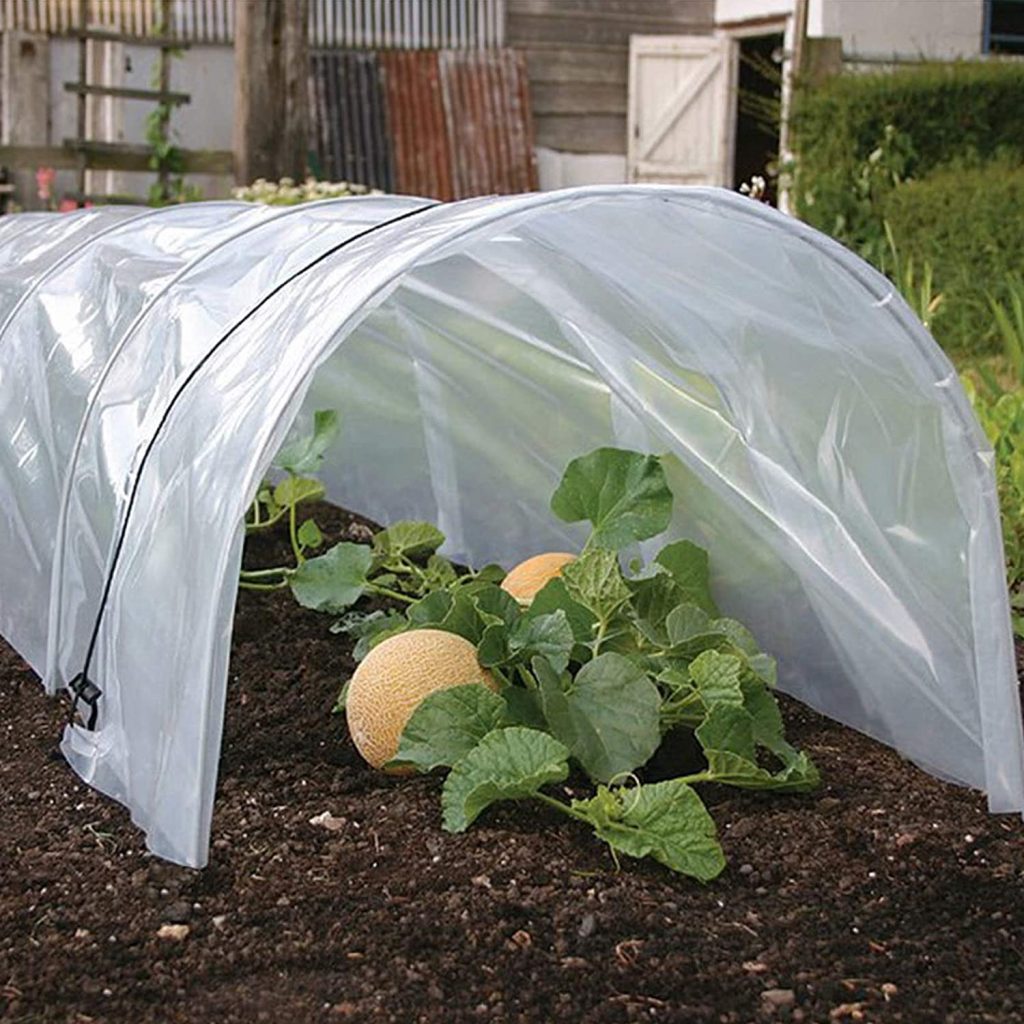How Much Does A Bell Pepper Plants Produce? Bell peppers are an extremely popular vegetable that is eaten widely in a range of cuisines. However, if you have your own vegetable garden you may consider growing your own bell peppers, so how much does a bell pepper plant produce?
Bell pepper plants typically produce a yield of approximately 7 to 10 oz (200 to 300g) per plant per year. According to a University Of Florida survey, however, this can vary depending upon the particular variety that is grown and the conditions in which the plant is grown. Bell peppers originate from relatively warm climates and therefore require higher temperatures to produce a reasonable crop, in places like the UK it may be challenging to produce a reasonable yield unless you grow the plants in a greenhouse.
How To Grow Bell Pepper Plants
Bell peppers are a member of the solanaceae family which includes vegetables such as tomatoes, eggplants, and potatoes. These plants are more challenging to grow than tomatoes because they require more heat than tomatoes which for many people that live in temperate to cool climates is extremely challenging, particularly, if the growing seasons are relatively short.
To get seedlings going quickly it is advisable in most climates to plant seeds into it a heated propagation tray as this will ensure that you have sufficient temperatures to ensure consistent germination and relatively rapid growth in the early part of the season.

If you are considering purchasing I heated propagation tray the one that we would recommend is the ipower germination kit which features a removable modular seed tray and a humidity dome which are both extremely advantageous features.
The removable modular seed tray is advantageous because this is the component of a unit is likely to deteriorate first therefore being able to remove it and replace it will extend the life of the unit substantially. The second key feature is the humidity dome, which is particularly important in maintaining a warm humid environment for the seedlings, particularly, in cooler climates. To see the latest price on Amazon click on the link below.
To plant the seedlings start by filling the seed tray with a good quality seed raising mix and then plant 2 to 3 seeds per cell to ensure that you get at least one plant in every cell. The seed should be planted at a depth of approximately half an inch and then they need to be watered frequently to ensure that the soil remains moist.
Once the seeds are planted the seedlings should appear after 14 to 21 days provided that there is sufficient temperature. As the seedlings are relatively slow growers compared to other vegetables it is advisable to leave them in the seed tray for 6 to 8 weeks by which time they should be large enough to be planted out into the garden.

When planting the seedlings out into the garden is important to ensure that any risk of frost has passed. If you live in a location where the daytime temperatures are still relatively cool it is advisable to increase the temperature around the plants by putting either a cloche or a row cover over them as this will accelerate the growth significantly.
In terms of the growing conditions, it is important to plant the seedlings in a location that is in full sun and contains rich moist and free-draining soil with plenty of nutrients. If your soil is lacking and nutrients it is advisable to dig in a bag of compost before placing the seeds into the ground.
The seedlings should be planted approximately 10 inches apart to ensure that they have sufficient space and a layer of mulch that is 2 to 4 in thick should be applied to the soil. Additionally, it is recommended that snail pellets be sprinkled around the plants as they are highly susceptible to attack from slugs and snails early on.
Once the plants are in the ground it is important to ensure that you water them regularly to maintain moist soil. You may also consider adding a single stake to the plants to ensure that they can stand up on their own, however, in many cases this is not required.
When the plants have become established they will start to produce flowers which will be followed by fruit shortly after. The fruiting period generally occurs in late summer to autumn.
The fruit can be harvested at any stage once it has reached a reasonable size however green fruit is generally not as sweet as the red or the yellow fruit which has been left on the plant for a longer period of time to ripen.
When you are ready to harvest the plant it is important not to twist or break off the fruit as you are likely to damage the stem of the plant. Instead, it is recommended that you use secateurs to avoid any possibility of damage.

The plant will continue to produce new flowers and fruit until the first frost arrives at which point it will kill the plants. However, it is important to note that bell peppers are actually perennial plants that are usually treated as annual plants in most regions, so it is possible to over winter the plants if you can keep them in a frost-free location.
How To Prepare Bell Pepper Plants For Overwintering
If you are going to try and over winter the pepper plants it is advisable to trim back all the leaves and remove any fruit and flowers that are currently on the plant. Once the plant is stripped of any foliage the plant needs to be relocated into an area that is frost-free which typically needs to be something like in a greenhouse or in a light-filled area indoor somewhere.
During this period of winter when the weather is not very warm the plant needs to be watered only occasionally to ensure that the roots remain moist, however, it is important not to water too frequently as the plant can become waterlogged. In these circumstances, there is a risk that the plants’ roots may rot.
Once the weather starts for improving in mid-spring then the plant can be put back outside in a location that is warm and sunny. However, it is important to recognize that for the plant to do its very best it needs to have additional heat which can be supplied either by keeping it in somewhere like a greenhouse or applying a row cover to the plant.

Extend Your Season With Growsun Row Covers
If you follow these simple steps you should be able to produce a second season of fruit from the same plant. I hope you found this article useful and have great success with your bell peppers, if you have any additional questions or comments please leave them in the section below.
Relevant Articles
Capsicum vs Bell Pepper: Are They The Same Thing?
Can You Plant Seeds From A Store Bought Bell Pepper?
Why Are My Pepper Plants Not Growing Peppers?

